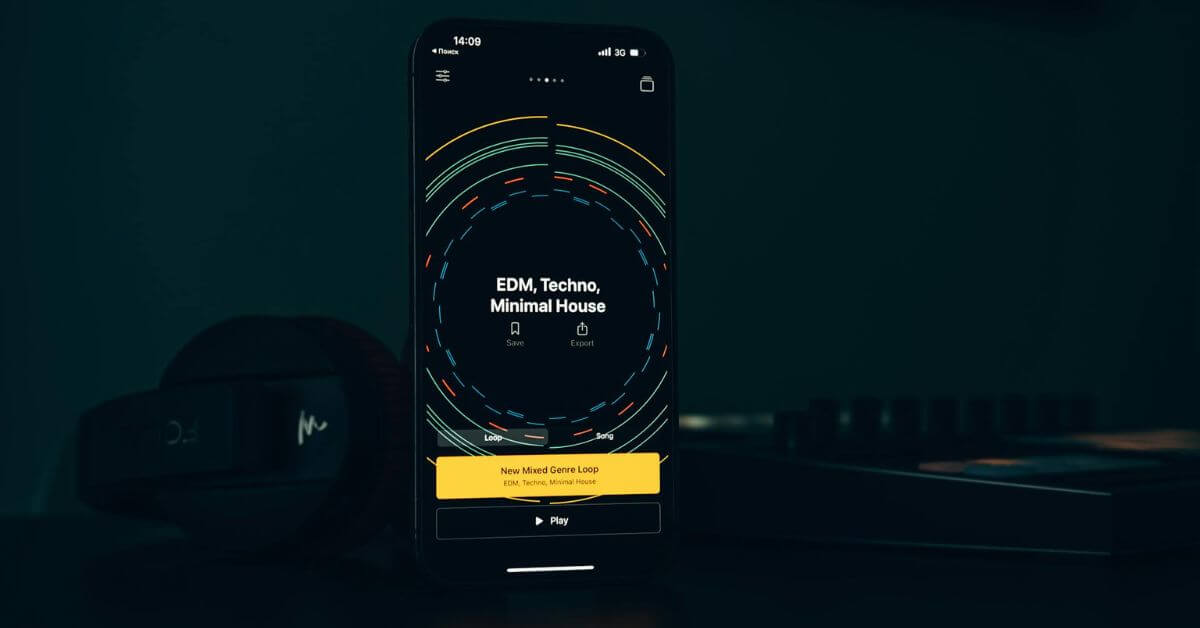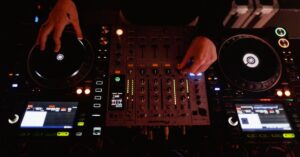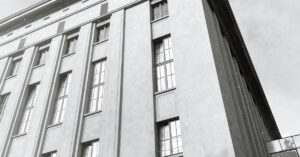Techno is a constantly evolving genre with countless sub-genres that have emerged over the years. Whether you’re a producer looking to dive into the specific elements of various styles or just someone interested in understanding the diversity of modern techno, this overview is here to help. It will provide a brief outline of the common techno sub-genres and their defining characteristics, helping producers pinpoint what to look out for in their tracks and giving enthusiasts a deeper understanding of how techno has transformed over time.
What is Techno ?
Techno is a genre born from innovation and experimentation, emerging in the 1980s in Detroit, Michigan. The genre was shaped by the pioneers Juan Atkins, Derrick May, and Kevin Saunderson, collectively known as the Belleville Three. These artists combined their love of futuristic sounds with the technology of the time, mainly newly invented synthesizers, drum machines like the Roland TR-808 and TR-909samplers and samplers.
Techno drew heavily from house and disco, using their rhythmic structures as a foundation while pushing into darker, more minimalistic and mechanical territory. Its repetitive beats, driving rhythms, and emphasis on synthetic textures laid the groundwork for a genre that would influence electronic music worldwide.
Read more: The origins of techno music.
Key Elements of Techno?
While techno has branched into a wide array of sub-genres, there are some core elements that nearly all styles share. Understanding these foundational characteristics will help you grasp the essence of the genre before breaking it down into its sub-genres.
- 4/4 Kick drum: At its heart, techno is built on repetitive, hypnotic rhythms designed to keep dancers in a groove. Tracks mostly revolve around 4/4 kick drums with syncopated hi-hats and claps layered on top (four on the floor).
- Synthesized sounds: Techno is synonymous with synthetic sounds created using analog and digital equipments. Synthesizer, drum machines, samplers and abstract sound effects characterize the machine inspired sound of techno.
- Minimalistic Approach: Less is often more in techno. Tracks frequently rely on gradual changes, subtle modulations, and layering to create a sense of progression without overwhelming complexity.
- Focus on Groove and Atmosphere: Techno tracks aim to immerse listeners with a balance between driving energy and atmospheric depth, ensuring a visceral connection to the dancefloor.
Techno Sub genres
The world of techno nowadays is incredibly diverse, and its sub-genres are often open to interpretation. These terms aren’t fixed or officially defined but are instead shaped by big players in the industry like artists, platforms, labels or clubs. Different people and platforms might classify the same track under different sub-genres, making it more of a fluid concept than a rigid structure.
For this guide, I’ll focus on some of the more widely recognised sub-genres—such as Raw / Deep / Hypnotic Techno and Peaktime / Driving Techno—as categorised by the platform Beatport. These categories provide a helpful starting point for understanding the nuances of modern techno, though it’s important to remember that creativity often blurs these boundaries. Let’s dive into what makes each style unique.
Detroit Techno
Detroit Techno is widely regarded as the “OG” of techno—a genre that laid the foundation for everything that followed. Emerging from Detroit in the 1980s, it was built around the use of early synthesisers, drum machines like the Roland TR-808 and TR-909, and the influence of electronic pioneers like Kraftwerk. This sound fused mechanical, futuristic rhythms with the soulful grooves of house and disco, creating a musical form that was both innovative and deeply expressive.
The history of Detroit Techno is often divided into two waves of artists. The first wave, led by the “Belleville Three”—Juan Atkins, Derrick May, and Kevin Saunderson—introduced the genre with tracks like Clear by Atkins (as Cybotron) and Strings of Life by May. These tracks set the tone with melodic synth lines and an emphasis on the transformative power of technology in music.
The second wave saw artists like Jeff Mills, Carl Craig, and Underground Resistance pushing the sound further into refined, more experimental territory. Their work expanded Detroit Techno’s global influence and solidified its status as a cornerstone of electronic dance music.
Characteristics of Detroit Techno:
- Heavy use of synthesisers and drum machines, especially the TR-808 and TR-909
- A fusion of mechanical rhythms with house and disco grooves
- Defined by two waves of pioneering artists
Raw / Deep / Hypnotic Techno
Raw / Deep / Hypnotic Techno is an evolution of the Detroit sound, emerging predominantly from Berlin’s underground scene. Often referred to as minimal techno, this sub-genre strips the music down to its essential elements, focusing on driving rhythms, deep basslines, and hypnotic, looping textures. It forgoes overt melodies in favour of subtle variations and evolving soundscapes, creating an immersive, meditative experience on the dancefloor.
Artists like Ben Klock, Marcel Dettmann, Len Faki, and Ricardo Villalobos have been instrumental in shaping this style. These producers, many of whom are closely associated with Berlin’s Berghain, emphasise atmosphere over complexity, crafting tracks that captivate through repetition and gradual progression.
This sub-genre often utilises heavy reverb, delay effects, and intricate percussive details, inviting listeners to lose themselves in its hypnotic groove. For producers, Raw / Deep / Hypnotic Techno offers an opportunity to focus on the core of techno—its rhythm and atmosphere—making it a great choice for those who love crafting sonic journeys that resonate on a deeper, almost primal level.
Characteristics of Raw / Deep / Hypnotic Techno:
- Stripped-down sound, focusing on rhythm and atmosphere
- Minimalist approach with repetitive, hypnotic loops
- Heavy use of reverb, delay, and subtle sonic variations
Dub Techno
Dub Techno is a sub-genre that blends the driving rhythms of traditional techno with the atmospheric soundscapes of dub music. It’s characterised by a subdued and meditative quality, often leaning into subtle textures and an expansive use of reverb and delay effects. The genre avoids dramatic arrangements, instead favouring a gradual evolution of sounds that build a deep and immersive experience.
Originating in the 1990s, Dub Techno was pioneered by artists like Basic Channel and Deepchord. These producers introduced a sound that embraced minimalism, where each element—whether a hi-hat, a chord, or a bassline—was carefully placed to create a spatial, almost ambient feeling. The result is music that feels timeless, often blurring the lines between the dancefloor and introspective listening.
For producers, mastering reverb and delay effects is key to capturing the essence of Dub Techno. Layering atmospheric elements and keeping the arrangement subtle yet dynamic will help achieve the genre’s characteristic depth.
Key Characteristics of Dub Techno:
- Deep, atmospheric soundscapes
- Subtle and gradual arrangements, avoiding dramatic drops
- Extensive use of reverb and delay to create spatial effects
Melodic Techno
Melodic Techno takes a more mainstream approach to the genre, combining the spirit of techno with uplifting, emotional melodies. This style often features “happy” or cinematic synth lines, paired with dramatic arrangements that build anticipation towards big, crowd-pleasing drops. It’s a sub-genre designed for festival stages and emotional dancefloor moments.
The genre gained popularity through artists like for example Tale of Us, Stephan Bodzin, and Solomun. These producers brought melodic elements to the forefront, creating tracks that tell a story or evoke strong feelings. The arrangements are typically more structured than other sub-genres, often using breakdowns and build-ups to captivate the listener and heighten the energy in a set.
For producers, Melodic Techno offers a chance to experiment with complex melodies, lush harmonies, and dramatic transitions. Incorporating rich, layered synths and ensuring that arrangements have clear peaks and troughs are key techniques for crafting this sound.
Characteristics of Melodic Techno:
- Uplifting synth melodies and cinematic harmonies
- Dramatic arrangements with big drops and breakdowns
- Designed for festival stages and large crowds
Peaktime Techno
Peaktime Techno is designed for the big rooms and mainstages of the world’s largest clubs and festivals. This genre has emerged more recently, focusing on high-energy builds and dramatic drops that ignite the dancefloor. It’s less melodic than Melodic Techno but still maintains a sense of tension and release, with a focus on rhythmic intensity and powerful moments that elevate the crowd’s energy.
While not as stripped-down as Raw/Deep/Hypnotic Techno, Peaktime Techno is more energetic and full-bodied, aiming to keep the momentum going with driving, intense grooves. This genre thrives on massive drops and heavy low ends, creating a dynamic that gets the crowd moving at full force. Artists like Charlotte de Witte, Adam Beyer, and Thomas Schumacher have helped define and popularize Peaktime Techno, with their tracks often featuring relentless basslines and thumping kicks.
For producers, crafting the perfect build-up and drop is essential. Layering strong, punchy basslines with energizing percussive elements will help produce tracks that bring intensity to peak moments on the dancefloor.
Key Characteristics of Peaktime Techno:
- Designed for big rooms and festival mainstages
- Focus on high-energy builds, dramatic drops, and crowd-pleasing moments
- Less melodic than Melodic Techno but more full-bodied than minimal styles
Hardgroove
Hardgroove is a sub-genre of techno that has its roots in the 90s, particularly in the UK. It’s known for its heavy percussion, distorted sounds, and a driving rhythm that emphasizes the groove over melodic or atmospheric elements. This genre is built around raw, funky beats and intricate percussion patterns that create a hypnotic and relentless energy.
Hardgroove Techno often features distorted and filtered sounds, giving it a rough, gritty edge. The percussion is the primary focus, with layered drums and syncopated rhythms driving the track forward. The style shares some similarities with industrial techno but has a distinct rhythmic complexity that sets it apart. Key artists like Ben Sims and Mark Broom helped to shape Hardgroove with their focus on percussion-driven tracks that pack a punch on the dancefloor.
For producers, Hardgroove requires a strong understanding of percussion. Using rhythmic loops, distorted effects, and punchy drum sounds is key to creating the genre’s signature heavy groove.
Characteristics of Hardgroove:
- Percussion-heavy, rhythm-driven tracks
- Distorted, raw sound with a gritty edge
- Focus on funky, syncopated beats
Industrial Techno
Industrial Techno is one of the older sub-genres of techno, rooted in the fusion of industrial music and IDM (Intelligent Dance Music). This genre is characterized by its noisy, abrasive sound, featuring harsh synths, distorted beats, and metallic sounds that give it an aggressive, mechanical feel. It shares a connection with the industrial genre, incorporating gritty textures, heavy percussion, and dark atmospheres, often resembling the harsh sounds of factories or industrial machinery.
Industrial Techno thrives on its raw, uncompromising energy, with tracks that emphasize power and tension. The genre’s distorted rhythms and chaotic soundscapes create an intense, in-your-face experience. Pioneering artists like Perc, Regis, and Paula Temple for example have pushed the boundaries of Industrial Techno, helping to cement its place in the underground scene.
For producers, creating Industrial Techno involves experimenting with distortion, noise, and the manipulation of aggressive, metallic sounds. The genre is perfect for creating dark, high-energy tracks that challenge conventional structures and push sonic boundaries.
Characteristics of Industrial Techno:
- Noisy, abrasive, and chaotic sound
- Roots in industrial music and IDM
- Heavy use of distortion and metallic, mechanical sounds
TikTok Techno
TikTok Techno represents the newest evolution of techno, tailored to the quick, digestible style that has become popular through platforms like TikTok. This sub-genre is designed to be easy to dance to, with its signature 4/4 beats and offbeat basslines that give it a trance-like feel. It’s highly accessible and often features vocal covers or catchy melodies sampled from old 90s or 2000s tracks, giving it a nostalgic yet modern twist.
The genre’s rise can be attributed to Gen Z’s love for retro influences mixed with contemporary dance music trends. TikTok Techno is typically shorter in length, optimized for quick engagement, and is easily recognizable due to its familiar structure and catchy, melodic hooks. Artists like Marlon Hoffstadt or Nico Moreno are at the forefront of this genre, bringing a fresh, approachable take on techno that appeals to younger, internet-savvy listeners.
Characteristics of TikTok Techno:
- Easy-to-dance-to 4/4 kicks with offbeat basslines
- Nostalgic use of 90s vocal covers or melodies
- Designed for short, engaging, and viral content
- Popular among Gen Z







